
Become a 3D animator for film and games! Get specialized training to fast-track your career with CG Spectrum’s online 3D animation courses. Learn directly from expert animators working on hit films and best-selling games. Find out more.
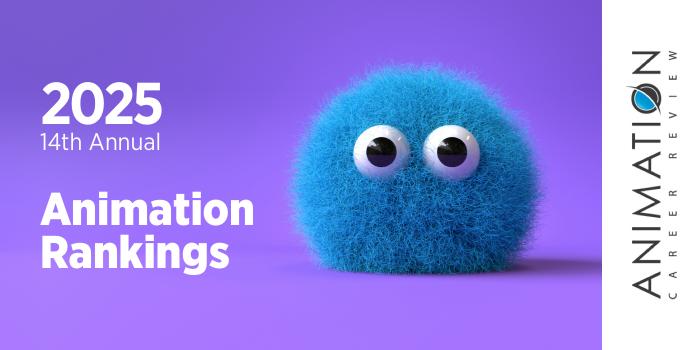
| Ranking | School | State |
|---|---|---|
| 1 | School of Visual Arts | New York |
| 2 | Rhode Island School of Design | Rhode Island |
| 3 | Pratt Institute | New York |
| 4 | New York University | New York |
| 5 | Rochester Institute of Technology | New York |
| 6 | Carnegie Mellon University | Pennsylvania |
| 7 | Massachusetts College of Art and Design | Massachusetts |
| 8 | The New School's Parsons School of Design | New York |
| 9 | Maryland Institute College of Art | Maryland |
| 10 | Drexel University | Pennsylvania |
| 11 | Fashion Institute of Technology | New York |
| 12 | University of Pennsylvania | Pennsylvania |
| 13 | Northeastern University | Massachusetts |
| 14 | Syracuse University | New York |
| 15 | Harvard University | Massachusetts |
| 16 | Rensselaer Polytechnic Institute | New York |
| 17 | Dartmouth College | New Hampshire |
| 18 | Virginia Commonwealth University | Virginia |
| 19 | New York Institute of Technology | New York |
| 20 | Emerson College | Massachusetts |
| 21 | Maine College of Art and Design | Maine |
| 22 | University of Connecticut | Connecticut |
| 23 | Rutgers University Camden | New Jersey |
| 24 | Tufts University | Massachusetts |
| 25 | Fairleigh Dickinson University | New Jersey |
Our 2025 list -our fourteenth annual- of the Top 25 Animation School Programs on the East Coast. For an explanation of our ranking criteria, click here.
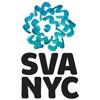
School of Visual Arts (SVA) hosts an annual festival known as the After School Special. This decade old event highlights the work of some of SVA’s most accomplished alumni in animation, film, television, and visual effects (VFX). In addition to the After School Special, School of Visual Arts houses one of the nation’s largest animation departments.
Serving approximately 760 animation students, the Animation Department at SVA provides two undergraduate programs for animators including BFAs in Animation, and 3D Animation and Visual Effects. Both programs provide hands-on experience with latest industry software including Adobe Animate, Storyboard Pro, After Effects, Toon Boom Harmony, and Maya.
BFA students also benefit from relationships with independent animators across New York and alumni-owned studios such as Titmouse, Augenblick, and Plymptoons; and mentorships with accomplished directors, character designers, and VFX artists.
Across programs, students will take courses such as Gesture Drawing; Python Scripting for Maya Artists; Sonic Storytelling; VFX and Compositing I-II; Visual Development; History of Animation I-II; Life Drawing: Figure, Form and Function; Advanced Animation Workshop I-II; and Animation Workflow.
The culminating experience for the Animation BFA is the thesis and presentation. 3D Animation and Visual Effects students will have the option to complete a thesis in computer animation or visual effects and compositing.
Graduates of the Animation Department at SVA are prepared to pursue careers in all areas of animation, film, VFX, and more. They can be found at DreamWorks, Lucasfilm Animation, Cartoon Network, Warner Bros. Animation, Nickelodeon, Sony Pictures Animation, and Disney Animation Studios. Some alumni have also gone on to land positions at established independent studios, or they have launched their own.
For animation students seeking an advanced degree, School of Visual Arts has a Computer Arts MFA program. Established in 1986, this terminal degree program was the first in the nation to focus solely on computer arts. Program features include immersive workshops; visiting artists; guest lectures in animation, motion graphics, and experimental art; internships with local and national studios; and an active network of more than 1,200 alumni.
SVA Computer Arts MFA students may focus their studies in animation, experimental art, or motion design. The curriculum also allows students to pursue a multidisciplinary course of study. Course examples for the program include Programming for Animators; Narrative and Visual Storytelling; Animation Culture; Digital Storyboarding; Modeling and Animation; Character Animation; Compositing; Editing for Animation; Experiments in Virtual Production; Techniques in Experimental Animation; Electronic Portfolios; 3D Animation for 2D and Motion Graphics Artists; technical Direction; and Creative Programming for Artists I-II.
The culminating experience for the Computer Art MFA program at SVA is the thesis project completed across four courses: Thesis Research and Writing I-II; and Thesis I-II.
Computer Art MFA students have been nominated for 13 Student Academy Awards and won nine. Students have also won awards at SIGGRAPH; Prix Ars Electronica; ISEA; the YouTube Awards; the Leonardo Awards for Excellence; and the Adobe Design Achievement Awards. Student works have also appeared at the New York Film Festival (NYFF); Cannes Film Festival; Tribeca Film Festival; Sundance Film Festival; Annecy International Film Festival; and the Ottawa Film Festival (OFF).
Graduates of the Computer Arts MFA program at School of Visual Arts are routinely hired at major companies and studios such as Industrial Light & Magic (ILM), MTV, Pixar, Google, Adobe, Sony Pictures Imageworks, Electronic Arts (EA), Disney, and DreamWorks. Some alumni have also gone on to launch their own studios and freelance businesses.
School of Visual Arts opened in 1947 with three teachers and 35 students. Today, the school serves approximately 3,815 students enrolled in dozens of BFA, MA, MFA, and MPS programs. School of Visual Arts is accredited by the Middle States Commission on Higher Education (MSCHE), with individual program accreditation by the National Association of Schools of Art and Design (NASAD) and the Council for Interior Design Accreditation (CIDA).
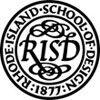
Rhode Island School of Design (RISD) opened its doors in the late 1800s with a mission to support Rhode Island’s growing jewelry and textile industries. The first courses of study at RISD focused in two areas: Freehand Drawing and Painting, and Mechanical Drawing and Design. Today, the school caters to artists of all kinds including from sculptors to animators.
All programs provide hands-on learning with access to state-of-the-art production studios; Macintosh and CGI workstations equipped professional editing and production software; sound mixing studios; and digital editing rooms. RISD students also benefit from collaborative study; experimental projects; workshops; the First Year in Florence program; and internship opportunities with local and national studios.
Rhode Island School of Design is also home to the Film/Animation/Video (FAV) Department. Serving approximately 150 students, the department houses the FAV BFA program, which combines animation, live-action, and open media. While students may specialize in any of the three areas, all students must complete first year studios in Experimental and Foundation Studies (EFS). Students will also take liberal arts courses to supplement studio studies.
Course examples for the RISD FAV BFA include Puppetry; Character Animation; Topics in Movement: Performance Assemblages; Animation Practices; Storyboarding; Intermediate Studio: Animation; Directing Cinema; Stop-Motion Animation; Computer Generated Imagery 3D; Experiments in Stop-Motion Animation; Experimental Film Techniques; Digital Effects and Compositing for the Screen; Computer Animation: Integrated Techniques; Advanced Stop-Motion Animation; and Character Design.
In the final year of the FAV BFA program at RISD, students will produce an independent project from idea to finished product. Students will receive critiques and individual guidance weekly from established industry professionals. Class meetings for the year will focus on group critiques, film screenings, and specialized technical workshops.
The year culminates with a professional reel, portfolio, and the RISD Senior Festival. Held in May, this public event allows students to network and present their final animated or live action films.
Graduates of FAV BFA program at the Rhode Island School of Design have gone on to create, direct and/or produce animated films and series such as Family Guy (Seth Macfarlane, Creator), The Simpsons (Lance Wilder, Animator), and the Oscar-nominated animated short Feral (Daniel Sousa, Animator and Director).
RISD graduates are also routinely hired at major networks and studios such as DreamWorks, HBO, Pixar, and PBS. Others have launched their own independent studios, freelance businesses, and production companies.
Rhode Island School of Design was founded in 1877 by a small group of women led by Helen Adelia Rowe Metcalf. One of the nation’s first independent colleges of art and design, RISD serves approximately 2,520 students enrolled in 44 full-time bachelor’s and master’s degree programs. This private nonprofit college and museum is fully accredited by the New England Commission of Higher Education (NECHE) and approved by the National Council for State Authorization Reciprocity Agreements (NC-SARA).
RISD’s Architecture, Landscape Architecture, and MA in Teaching programs have special accreditation by the National Architecture Accrediting Board, the Landscape Architectural Accreditation Board, and the RI Department of Education.

The School of Art (SoArt) at Pratt Institute (Pratt) houses eight departments and more than 30 degree, minor, and certificate programs. Students in all SoArt programs and departments benefit from the school's guest lecture series; frequent exhibitions; and courses led by creative professionals and scholars.
For students seeking a degree in animation, the SoArt Department of Digital Arts houses BFA degrees in 2D Animation, and 3D Animation and Motion Arts. Students seeking a graduate degree can enroll in the 3D Animation and Motion Arts MFA program.
Across all Digital Arts programs, students benefit from small class sizes; frequent trips to festivals, screenings, exhibitions, and shows in New York City; collaborative projects; study abroad experiences in places such as Scotland and Germany; and access to digital computing facilities outfitted with state-of-the-art Apple computer stations and the latest industry software including Nuke, Adobe Suite, ToonBoom, TVPaint, ProTools, and Ableton.
Other production spaces include Dragonframe stations; a green screen room; the stop motion studio; an audio editing suite; an experimental studio; and a spatial computing lab. Studio Crit—an additional space for critiques—hosts regular sessions that allow students to present projects to professors and peers for feedback.
The Department of Digital Arts at Pratt Institute also oversees an internship program designed specifically for digital artists. Throughout the academic year, the departments designated Internship Coordinator matches students with studios and companies in the New York metro area. This allows students to gain experience and skills in areas such as animation, game design, visual effects (VFX), motion graphics, and interaction design.
The culminating experience for the 2D Animation and 3D Animation and Motion Arts programs at Pratt Institute is the senior capstone project. In semester six of the program, students will begin production with an animation development course. In semesters seven and eight, students will complete their capstone projects across the Senior Projects I and II courses. Projects must be portfolio quality to graduate from the program.
Graduates are prepared to pursue positions in all areas of animation. Alumni have gone on to direct their own independent award-winning animated films and collaborate on many other celebrated animated projects. Pratt 2D and 3D graduates can also be found at places such as Nickelodeon, Disney, Titmouse, and Cartoon Network.
The 3D Animation and Motion Arts MFA at Pratt Institute is a 60 credit-hour, two-year terminal degree program that explores a multitude of methods and techniques. Examples include animation, visual effects (VFX), rendering, audio, stop-motion, texturing, modeling, and lighting. While students may explore these areas collectively, the sheer number of available courses allows them to customize the program to their interests.
All MFA students will create narrative films, installations, and non-narrative films using 2D and 3D digital animation techniques, live action techniques, and motion graphics. Course examples for the program include 3D Modeling I; 3D Animation: Expressive Motion; 3D Character Modeling and Rigging; Lighting and Rendering; 3D Animation Studio I: First Film; Graduate Animation Seminar I-II; and 3D Animation Studio II: Performance and Acting.
The 3D Animation and Motion Arts MFA program at Pratt Institute culminates with a thesis project completed across three courses: Thesis I, Post Production, and Thesis II. Graduates are prepared to pursue teaching positions and leadership roles in the film and television, game design, advertising, engineering, forensic animation, medical animation, education, and e-learning industries.
Pratt MFA alumni have been hired at places such as Sony Pictures Imageworks, DreamWorks, New York Institute of Technology (NYIT), Walt Disney Animation Studios, Gameloft, Howard University, Cartoon Network, Industrial Light & Magic (ILM), The Digital Worlds Institute at University of Florida (UF), NBCUniversal, Curious Pictures, Digital Domain, Rochester Institute of Technology (RIT), Augenblick, Framestore, National Taiwan Normal University (NTNU), and Titmouse.
Pratt Institute was founded in 1887 by industrialist and oil magnate Charles Pratt. Additionally, in 1896 Pratt founded Pratt Free Library—Brooklyn’s first public library. Serving approximately 5,135 students today, Pratt Institute was also one of the first colleges in the U.S. to welcome students without regard to class, gender, or color.
The school provides 48 programs across six schools, The Center for Interdisciplinary Studies, and campuses in Brooklyn, Manhattan, and Utica, New York. Pratt Institute is accredited by the Middle States Commission on Higher Education (MSCHE).
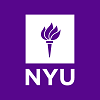
With locations in Abu Dhabi and Shanghai, along with 12 global academic centers and research programs across 25+ countries, New York University (NYU) sends more students overseas than any other American university. NYU Abu Dhabi serves approximately 530 students enrolled in 25 areas of study, while NYU Shanghai serves more than 1,600 students across 19 areas of study. Students across all NYU colleges, schools, and institutes are encouraged to participate in NYUs broad range of study abroad programs. This includes students in Tisch School of the Arts (Tisch).
Founded in 1965, Tisch serves more than 4,000 students enrolled in BA, BFA, MA, MFA, MPS, and PhD programs. Programs are provided across four institutes including the Maurice Kanbar Institute of Film and Television; the Institute of Emerging Media; the Martin Scorsese Institute of Global Cinematic Arts; and the Institute of Performing Arts.
Producing more than 5,000 films per year, the Maurice Kanbar Institute of Film and Television houses the Department of Animation and Digital Arts. Within the department is a Film and Television BFA with an Animation Area. Launched in 1980 with 80 students and five courses, the Animation Area was the first program to bring digital technology to Kanbar. Today, the Animation Area provides close to twenty different courses to more than 500 students from nearly every state and dozens of countries.
The Animation Area at NYU Tisch provides instruction in 2D, 3D, and Traditional Animation. The program begins with animation fundamentals and progresses to intermediate animation, then advanced. Course examples include Experimental Animation; Drawing and Design for Animation; Stop Motion Animation; Visual Effects for Compositing; Special Topics in 3D Animation; Advanced Animation Production; Action Analysis I-II; Writing for Animation; and Animation: From Pitching to Pipeline to Production.
In addition to providing in-demand courses, the Animation Area at NYU Tisch provides access to state-of-the-art facilities; interactions with guest speakers from the industry; participation in events hosted by the Student Animation League (SAL); and guidance, networking opportunities, and community spaces through the NYU Tisch Animation Alumni Association (AAA).
Graduates of the Film and Television BFA (Animation Area) at NYU Tisch are prepared to pursue positions at studios across the U.S. and abroad. Some program alumni also go on to launch their own independent studios and freelance businesses. Graduates can be found at places such as Walt Disney Animation, Pixar, and DreamWorks.
New York University is the largest private university in the U.S. Founded in 1831, the school serves more than 55,000 students across degree-granting campuses in New York, Abu Dhabi, and Shanghai. With more than 19,000 employees, New York University is also one of the state’s largest employers. Students at NYU have access to more than 400 program options across 20+ colleges, schools, and institutes. New York University is accredited by the Middle States Commission on Higher Education (MSCHE).

Rochester Institute of Technology (RIT) is the third largest source of undergraduate STEM degrees among all private universities in the U.S. In 1983, the school became the first university in the nation to offer a BS in Biotechnology, and it enrolls more female astrophysical sciences and technology doctoral students than any other institution.
Rochester Institute of Technology also houses a School of Film and Animation, which is a designated Center of Excellence (COE) by Toon Boon. Part of the College of Art and Design, the school provides numerous opportunities to gain real world experience—all before graduation.
For starters, RIT houses the fourth-oldest and one of the largest cooperative (co-op) education programs in the world. All students are required to complete at least one co-op before graduation. Next, School of Film and Animation students may participate in RIT’s Study Away: LA Program. This includes a semester away in Los Angeles, where students can work at top studios and entertainment companies.
Finally, the Coca-Cola Refreshing Films program gives students the opportunity to create content for the big screen. In 2022, RIT Film and Animation students won the program, and their short film ran nationwide in AMC and Cinemark movie theaters.
Other School of Film and Animation features include access to the 52,000 square foot MAGIC Spell Studios; classrooms and labs outfitted with state-of-the art equipment and the latest industry software such as Maya, Dragonframe, TVPaint, and Adobe Creative Suite; courses taught by award-winning industry professionals; and participation in Creative Industry Day which attracts representatives from film studios, design firms, and advertising agencies.
Undergraduate programs in the School of Film and Animation at RIT include a Film and Animation BFA that focuses on production, screenwriting, 2D animation, 3D animation, and stop motion animation; a BFA in Film and Animation with an Animation or Production option; and a Motion Picture BS that combines engineering and the arts with animation production, feature film, and television.
The Animation option has three tracks including 2D Animation, 3D Animation, and Stop Motion. Across all programs, students will have opportunities to explore AR/VR, digital effects, sound design, games, compositing, and live-action.
At the graduate level, the School of Film and Animation at RIT has a Film and Animation MFA with four options including 2D Animation; 3D Animation; Production; and Screenwriting. Students in this program have 24/7 access to a dedicated graduate lab and opportunities to gain experience while working as a faculty research assistant, graduate assistant, or other paid position.
The BFA, BS, and MFA programs culminate with the production of an industry-ready film. Finished films will be screened at a public event.
Graduates of Rochester Institute of Technology enjoy a 92% employment rate. School of Film and Animation alumni are routinely hired at major studios such as DreamWorks, Lucasfilm, Sony, Industrial Light & Magic (ILM), Disney Animation Studios, Electronic Arts (EA), Nickelodeon, and Dolby.
Rochester Institute of Technology was founded in 1829 as the Rochester Athenaeum. With global campuses in China, Croatia, Dubai, and Kosovo, this research university serves more than 20,000 students, making it one of the largest private universities in the U.S. RIT provides 200+ academic programs across 10 colleges and institutes, and the School of Individualized Study. Rochester Institute of Technology is accredited by the Middle States Commission on Higher Education (MSCHE).
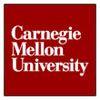
Carnegie Mellon University (CMU) is the world’s only institution to have Buggy Races. Although this tradition began as something fun and silly to do back in the 1920s, the races today begin as a design project that sees student teams brainstorm, sketch plans, build from scratch, and test the vessels before the big event. For what takes long hours to complete, Design teams take the skills and knowledge they’ve acquired in the classroom and apply it to each project—all to win one of CMU’s many coveted awards.
Students in all majors are welcome to participate in the Buggy Races. This includes students in programs supported by the Integrative Design, Arts and Technology (IDeATe) Network. In collaboration with the Robotics Institute (est. 1979) in the School of Computer Sciences, the IDeATe Network manages a total of 10 undergraduate minors, including Animation and Special Effects.
Open to students from any major, the Animation and Special Effects minor helps students develop marketable skills in areas such as digital 2D and 3D animation techniques; storytelling through animation; rendering and compositing; visual effects and procedural animation; expanded and experimental animation methods; and real-time animation systems.
Courses for this 45-unit program are project-based, immersive, and led by expert faculty in Art and Robotics. Course examples include Introduction to Computing for Creative Practice; Intermediate Studio Creative Coding; Introduction to 3D Animation Pipeline; Technical Character Animation; Storytelling Through Effects Animation; Storyboarding; Bipedal Rigging for Animation Production; Character Modeling; Experimental Capture; and Advanced Animation Studio.
While the IDeATe Animation and Special Effects minor is open to students from all majors, an ideal program option for students seeking a four-year degree is the Electronic and Time-Based Media BFA (ETB BFA). Housed in the College of Fine Arts (CFA), this interdisciplinary program explores areas such as animation, video and performance, game art, and computational and interactive arts. Students will take advanced courses such as Animation, Art, and Technology; Digital Storytelling and Resistance; Experimental Game Design; and Music Video/Visual Music.
Graduates of the ETB BFA and Animation and Special Effects minor programs at Carnegie Mellon University are prepared to pursue positions at film and animation studios, game design studios, television networks, advertising agencies, and more. Program alumni have been hired at places such as DreamWorks Animation, Comedy Central, Electronic Arts (EA), Sony Interactive Entertainment, Walt Disney Studios, Zynga Games, MTV, Paramount, Blizzard Entertainment, and Warner Interactive.
Carnegie Mellon University was founded on November 15, 1900 by industrialist and philanthropist Andrew Carnegie. Back then, the school was known as Carnegie Technical Schools. Today, CMU is a private global research university that provides over 200 programs to more than 14,500 students from 126 countries. In addition to the main campus in Pennsylvania, Carnegie has campuses in Silicon Valley and Doha, Qatar.
Housed across seven colleges and schools, the academic programs at CMU are also provided at locations in Africa, Asia, Australia, Europe, Mexico, and Portugal. Carnegie Mellon University is accredited by the Middle States Commission on Higher Education (MSCHE).

Massachusetts College of Art and Design (MassArt) has a four-year Animation BFA program that focuses on experimentation and innovation. Housed in the school’s Animation Department, the program features courses taught by accomplished faculty; dedicated state-of-the-art labs, classrooms, and production spaces such as digital studios and stop motion stations; campus events such as screenings and exhibitions; collaborative projects; and the opportunity to display works on campus.
Students will begin the MassArt Animation BFA program with the 30-credit Studio Foundation Curriculum (SFC). In addition to taking courses such Studio for Drawing; Thinking, Making, Writing: Using Words with Clarity and Flair; and Visual Language, students will develop projects from start to finish. Critiques, both self and peer, are also part of the SFC, as well as opportunities to exhibit first-year projects at MassArt’s Brant Gallery.
In the second year of the Animation BFA program at MassArt, students will be introduced to animation basics, digital 2D animation, and experimental animation. Students will also take art history, liberal arts, and creative courses. Examples include Human Figure in Illustration; Animation 1: Basics; Life Drawing; Figurative Clay Construction; Introduction to Digital 2D Animation; Media Techniques; Color for Painting; Animation 2: Experiments; and Design for Animators.
In the junior and senior years of the Animation BFA program at MassArt, students will focus primarily on studio electives such as 3DCG Character Animation; Puppet Animation and Fabrication; and Sound Design for Animators. Examples of other advanced coursework includes Animation 3: Communication, and Animation 4: Production. BFA students will also complete an animation portfolio and animation project as the culminating experience for the program.
Graduates of the Animation BFA program at Massachusetts College of Art and Design are prepared to pursue creative roles in industries such as film and animation, digital art, advertising and marketing, and design. Program alumni have also gone on to launch their own studios or freelance businesses.
Founded in 1873, Massachusetts College of Art and Design is the first public, independent college of art and design in the U.S. The school serves approximately 1,940 students enrolled 18 undergraduate programs, nine graduate programs, and a number of minor, certificate, continuing education, and post-baccalaureate study programs. Massachusetts College of Art and Design is accredited by the New England Commission of Higher Education (NECHE) and the National Architectural Accrediting Board (NAAB).
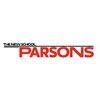
In 1926, The New School became the first American university to teach the history of film, and one of the first to provide college-level courses in jazz and photography. Courses in the creative arts were taught by the likes of artists such as Frank Lloyd Wright, W. H. Auden, and Martha Graham. Today, The New School is the only university to have a design school (Parsons School of Design), liberal arts college, performing arts college, and graduate programs and colleges under one roof.
Serving approximately 5,755 students, Parsons School of Design is the largest college at The New School. Within the school is a STEM-designated Design and Technology program with BFA and MFA pathways.
The BFA program focuses on storytelling, emerging art, design practices, and interaction. Specialization options include Creative Technology and Game Design. Course examples for this the 120 credit-hour program include Drawing/Imaging; Critical Computation Lab; Objects as History; Space/Materiality; Integrative Studio; History of Design; Core Studio Environments; Time; and Design Studies.
All New School undergraduates must also complete the 30 credit-hour first-year experience (FYE). Students will explore 2D and 3D processes, drawing, and digital design; complete liberal arts studies; and participate in seminars and studios.
The Design and Technology BFA culminates with a thesis project, completed across two courses worth a total of 12 credits.
The Design and Technology MFA at The New School requires 60 credit hours of study. Students in this program have access to studios such as xFab Lecture and Lab; Major Studio; Creative Practice Seminar; and Collaboration Studio. Other program features include immersive classes taught by industry professionals; opportunities to work on projects with external partners such as The Metropolitan Museum of Art (The Met) and One Plus; and creative collaborations with Communication Design, Transdisciplinary Design, and Data Visualization students, among others.
The Design and Technology MFA program at Parsons School of Design culminates with the Thesis Studio, completed across two courses totaling 12 credit hours.
All students may participate in The New School’s internship program, as well as projects with external partners such as Samsung, Google, The New York Times, Intel, Panasonic, NYC Media Lab, IBM, Nokia, MIT, and SXSW. In addition, students in all New School programs have the opportunity to interact with and work on projects with professionals at places such as Nickelodeon, Atari, MTV, Apple, The Metropolitan Museum of Art (The Met), UNESCO, Siemens, Eyebeam Art and Technology Center, and OnePlus Technology.
The School of Continuing and Professional Education at The New School has an additional program for animators interested in a flexible, shorter course of study. The Motion Design and Animation certificate consists of just three required courses that explore the production process from start to finish. Courses include Storytelling with Motion Graphics and Animation; Motion Design 1 with After Effects; and Moton Design 2 with After Effects.
The Motion Design and Animation certificate can be taken alone or in combination with the Design and Technology BFA or MFA programs. This 100% online program takes just one year to complete.
Graduates of the BFA, MFA, and certificate programs at The New School are prepared to pursue positions in animation, 2D and 3D animation, game design, advertising, VR/AR, motion graphics, immersion experience design, digital filmmaking, graphic arts, interaction design, television production, mobile and application design, web design, software design, and media art.
The New School was founded in 1919 as the New School for Social Research. Serving approximately 10,815 students today, the school provides close to 130 degree and diploma programs across six colleges and schools. This includes Parsons School of Design; Eugene Lang College of Liberal Arts; the College of Performing Arts; The New School for Social Research; the Schools of Public Engagement; and Parsons Paris.
The New School has been accredited by the Middle States Commission on Higher Education (MSCHE) since 1960. Parsons Paris is declared to the Rectorat de Paris as an établissement d’enseignement supérieur privé (a private higher education establishment) and has maintained its right to operate in France since 2013. This branch campus of The New School is also MSCHE-accredited.
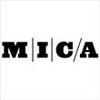
Maryland Institute College of Art (MICA) is accredited by the National Association of Schools of Art and Design (NASAD). The school provides both degree programs and non-credit options for artists of all kinds. Degree programs at MICA require participation in the school’s First Year Experience (FYE). During this exploratory year, students can collaborate; study contemporary art and design practice; and participate in critiques.
The rigorous FYE curriculum also highlights skill-building activities, technology, and 2D, 3D, and 4D media studies. Upon completion of the MICA FYE, students will move on to their chosen major. Animation is one of MICA’s top majors. Students in other majors may minor in Animation. This 15 credit-hour program requires The Principles of Animation and Digital Tools for Animation. Students may select other courses from the following: Storyboarding for Animation; Stop-Motion Animation; Introduction to 3D Animation; and Animation Pre-Production. A final project is also part of the program.
Animation majors will be admitted to MICA’s Animation Department. Leading to a BFA, the 120 credit-hour Animation program requires 90 credit hours in the major. This means, students will spend much of the program studying animation and creating animated works.
Course examples for the program include The Principles of Animation; Digital Tools for Animation; History of Animation; Stop-Motion Animation; Introduction to 3D Animation; 2D Character Animation; 3D Character Rigging; Animation Pre-Production; and 3D Animation Performance.
The MICA Animation BFA program culminates with a year-long capstone/thesis. This may include a film, installation, or interactive media project. Final projects are presented at the MICA Grad Show, which consists of exhibitions and events that highlight final projects for all students across the school’s 14 MA and MFA programs.
Graduates of the Animation BFA program at Maryland Institute College of Art are to pursue roles in areas such as entertainment, games, and advertising. They have been hired at major studios such as DreamWorks, Disney, MTV, and LAIKA. Some MICA alumni have also gone on to launch their own studios or freelance businesses, while others go on to pursue graduate studies at MICA and other top art and design schools.
Maryland Institute College of Art is the oldest independent, continuously degree-granting college of art and design in the U.S. Serving 2,090 students from 45 states and 53 foreign countries, MICA provides more than 20 different art and design programs leading to a BFA, MA, MFA, MBA, MPS degree, or post-baccalaureate certificate. In addition to NASAD-accreditation, Maryland Institute College of Art is accredited by the Middle States Commission on Higher Education (MSCHE).

Drexel University has one of the largest cooperative education programs in the U.S. allowing students to gain up to 18 months of work experience in their chosen field—all before graduation. Drexel University also houses one of the nation’s largest media arts and design colleges.
The Antoinette Westphal College of Media Arts and Design provides eighteen undergraduate majors, twenty-six undergraduate minors, and several STEM-designated and accelerated degree programs across the entertainment, visual art, media, design, and performing arts. In addition to the co-op program, which allows undergraduates to spend six months working full-time in the industry, students in all programs benefit from a studio-based curriculum; courses led by industry professionals; and access to state-of-the-art production facilities and studios.
Examples include the 1200 square feet Animation Capture and Effects Lab (ACE-Lab); computer labs outfitted with advanced graphics workstations; screening rooms; and the Immersive Research Lab for augmented reality, virtual reality, and immersive media projects.
The Antoinette Westphal College of Media Arts and Design at Drexel University (Drexel) has several paths to study animation including the Animation and VFX BS; the Digital Media MS; the Dual Animation and VFX BS/Digital Media MS; the Digital Media and Virtual Production BS/Digital Media MS; and the Digital Media PhD. An Animation and VFX minor are also available.
The curriculum for the eight-course, 24 credit-hour minor provides a foundation storytelling, design, and the technology used by 3D animators and VFX artists in the entertainment industry. Through 12 credit hours of electives, minor students may also customize the program. Elective examples include Digital Character Creation; Scripting for Animation and VFX; Technical Directing; and Lighting and Surfacing. Students can take the Animation and VFX minor alone or with just about any Westphal degree program.
The Dual BS/MS programs consist of coursework and projects in animation, interactivity, gaming, 3D modeling, and digital design. The programs also explore digital media history, theory, and methods. Westphal dual BS/MS students can also participate in three co-op experiences in the second, third, and fourth years of study. Positions may be paid or unpaid.
Past co-op positions include animation, technical direction, visual effects (VFX), and 3D production work at places such as Cartoon Network, Pixar, 3FX Medical Animations, Sony Studios, Ingenuity Studios, and FuseFX.
The Animation and VFX BS program provides instruction and hands-on training in 3D modeling, storyboarding, character design, rigging, scripting motion capture, and storytelling. Animation electives allow students to specialize in an area such as VFX, motion capture, character performance, or organic modeling. Course examples for the program include Digital compositing; Computer Programming; Scripting for Animation and Visual Effects; Character Animation; Experimental Animation Lab; History of Modern Design; Organic Modeling; Audio Production and Post; and Spatial Data Capture.
In addition to the co-op program, Animation and VFX BS students can participate in Westphal’s Drexel LA program. During this experience, students will spend an entire summer living and working in LA alongside students in the Screenwriting, Film and Television, and Playwriting programs. Drexel LA students have held internships at Riot Games, BBC Worldwide Productions, Nerdist, and ImageMovers.
The Westphal Drexel Animation and VFX BS program culminates with the Digital Media Senior Project. Students will create works in teams in a simulated real-world production environment. Final projects will be presented during a Thesis Exhibition attended by industry professionals.
The Digital Media MS at Drexel University is a STEM-designated, hybrid program that focuses on research and media applications. Areas explored include animation, gaming and digital media history, interactivity, advanced digital design, and 3D modeling. Course examples for the program include New Media: History, Theory and Methods; Designing for Interactivity; Animation and Game Design Bootcamp; Research Methods for Digital Media; and New Media Project.
Students in the MS program will complete several independent, industry-sponsored, student-created, or faculty-approved projects. Past projects have focused on areas such as animation design, advanced animation production techniques, video games, and narrative comics. This two-year program culminates with a thesis, oral presentation, and demonstration in the Department of Digital Media.
The Digital Media PhD program at Drexel University is a research-driven degree that take place in an experiential learning environment. PhD students may conduct research in entertainment, engineering, business, education, health, or other areas. Past projects have included advanced animation production techniques; theme park ride and animation design; interactive online non-linear narrative comics; multi-touch games for teaching middle-school children; Brain-Computer Interfaces (BCI) for video games; and a multimedia interactive dance performance with body tracking.
Graduates of the Animation/VFX and Digital Media programs at Drexel University are prepared to pursue advanced roles in the entertainment industry, game design and development, television production, advertising, and more. Program alumni have worked on projects such as The Mandalorian, How to Train Your Dragon 2, Ready Player One, and Avengers: Infinity War.
Graduates have also gone on to land positions in research and development in the fields of virtual reality, generative design, and real-time rendering solutions. Program alumni have been hired at places such as DreamWorks, Pixar, XBOX, Disney, NCSoft Corp, and Microsoft.
Drexel University was founded in 1891 by philanthropist and financier Anthony J. Drexel. Known as Drexel Institute of Art, Science and Industry, the school’s first graduating class was just 70 students.
Today, Drexel University is an R1 Doctoral University that serves approximately 21,705 students enrolled in more than 200 degree programs across 15 colleges and schools.
Drexel University is accredited by the Middle States Commission on Higher Education (MSCHE). The school’s academic programs in art, design, and media are accredited by the National Association of Schools of Art & Design (NASAD).

Fashion Institute of Technology (FIT) provides programs in design, technology, business, and fashion. Accredited by the National Association of Schools of Art and Design (NASAD), the school focuses on collaboration, innovation, hands-on training, and global studies.
For FIT students interested in animation, the school has an Animation, Interactive Media, and Game Design program. Housed in the School of Art and Design and leading to a BFA, the program takes place in a collaborative environment designed to mimic professional production pipelines. Students will explore animation, game design, immersive environments (AR/VR), and Interactive storytelling, while mastering the latest tools, techniques, and technologies used in the entertainment and games industries.
Courses for the program are taught by industry professionals who are active in the field. Course examples include Principles of Animation I-II; 2D Computer Animation; Design Fundamentals for Animation and Game Design; 3D Computer Modeling and Rendering; Narrative Animation Fundamentals; Design and Authoring for Interactive Media II; 3D Modeling and Animation; Storyboarding and Storytelling; History of Animation; Digital Editing for Film and Video; Advanced 3D Animation; Programming for Artists; Animation Production; and 2D Computer Image Generation.
The culminating experience for the FIT BFA program is the Senior Project. Consisting of an individual short or interactive work, final projects are presented at the Graduating Student Exhibition for the School of Art and Design.
Graduates are prepared to pursue careers in 2D and 3D animation, visual effects (VFX), game design, motion graphics, animation production, post-production, advertising and marketing, architecture, television production, publishing, recording studios, news agencies, corporations, and more.
FIT alumni have been hired at places such as Disney, LucasArts, DreamWorks, Warner Bros., Pixar, BBDO Worldwide, Electronic Arts (EA), Framestore, Weta, Blizzard Entertainment, Marvel Studios, Nickelodeon, Epic Games, Activision Blizzard, MPC, LEGO, Atlantic Records, CNN, Nike, Sony Music, Vogue, R/GA, ESPN, Psyop, Hyperkat, Think Brands, MoMA, and Harper’s BAZAAR.
Fashion Institute of Technology opened in 1944 inside the High School for the Needles Trades. On the first day of class, the school welcomed 100 students. Today, with a campus that spans 1.5 NYC blocks, FIT serves nearly 8,000 students from the U.S. and abroad. Part of the State University of New York (SUNY), the school houses five divisions that provide more than 50 majors leading to an AS, BFA, BS, MA, MFA, or MPS degree.
In addition to the NASAD, Fashion Institute of Technology is accredited by the Middle States Commission on Higher Education (MSCHE) and the Council for Interior Design Accreditation (CIDA).

In 2019, University of Pennsylvania (UPenn) renamed its School of Design to honor iconic footwear designer and Wharton School alum Stuart Weitzman. Students in the Weitzman School have access to dozens of programs in the fine arts, architecture, city planning, historic preservation, and spatial analytics. Leading the bachelor’s, master’s, or PhD, many of these programs are STEM-eligible, while others can be combined into a dual degree.
For students seeking an animation degree, the Weitzman School has BA degrees in Fine Arts, and Fine Arts and Design. Both programs provide access to extensive resources and state-of-the-art facilities such as computer labs with Wacom tablets; lighting and grip equipment (used with Dragonframe software for stop-motion animation); DSLR cameras; 2D and 3D animation and compositing applications such as Maya, Premiere, 3ds Max, After Effects, Mudbox, TVPaint, and MatchMover; sound recording and editing equipment; and a stop-motion and multiplane studio with a dedicated capture workstation.
Available to students in the College of Arts and Sciences and the School of Engineering, the Fine Arts BA emphasizes seminar-based instruction, project-based learning, collaboration, and interdisciplinary studies. Studio courses are provided in a variety of areas such as animation, video, drawing, print media, 3D, and painting. Animation course examples include Mixed Media Animation; Hand-Drawn Computer Animation; Environmental Animation; 3D Computer Modeling; The Animation of Disney; Digital Figure Modeling; History of Children’s TV; Art, Design and Digital Culture; Advanced 3D Modeling; and Video I.
The Weitzman School’s Fine Arts and Design program provides an interdisciplinary major in Fine Arts (FNAR) and an integrative major in Design (DSGN). Both majors combine seminar courses, studio instruction, and interactions with designers and artists through the visiting artist lecture series. Coursework for the programs allow students to study animation, digital design, 3D modeling, and more. Students have access to the same animation courses for the Fine Arts BA program as well as Immersive Media Studio; Cinema Production; Digital Figure Modeling; Procedural Design Systems for Virtual Environments; and Art of Web.
Another path to study animation at UPenn is the Digital Media Design (DMD) program. Part of the School of Engineering and Applied Science (SEAS), the DMD program launched in 1998. Leading to a bachelor’s in engineering and science (BSE), this interdisciplinary program allows students to explore animation, games, interactive technologies, virtual reality (VR), and computer graphics. Course and elective examples include Computer Animation; Advanced Rendering; Mixed Media Animation; Environmental Animation; Interactive Computer Graphics; and Hand-Drawn Animation;
The School of Engineering and Applied Science at University of Pennsylvania also houses the Center for Human Modeling and Simulation (HMS). Established in 1975, the center is a leader in the fields of behavioral animation, 3D computer graphics, and human simulation. Within the center is a Computer Graphics and Game Technology (CGGT) Engineering MS (MSE) program.
Established in 2004, the interdisciplinary CGGT MSE program covers four core areas including Creative Arts and Design; Computer Science, Systems and Technology; Product Design, Development and Production; and Business and Entrepreneurship. The Creative Arts and Design area explores 3D models and animation; storytelling and narrative; film studies; visual communication; human-computer interaction (HCI); and user interface (UI) design.
Other program highlights include access to equipment and resources available through the SIG Center for Computer Graphics; courses such as Computer Animation, Physically-Based Animation, and Advanced Project Animation; and the opportunity to specialize in areas such as Art and Animation, Animation and Simulation Technology, or Creative Design.
Graduates of the Fine Arts, Fine Arts and Design, and Computer Graphics and Game Technology programs are prepared to pursue advanced roles in the entertainment industry, games, architecture, advertising, and more. Across programs, alumni have been hired at places such as DreamWorks, Industrial Light & Magic (ILM), Microsoft, Pixar, Walt Disney Animation, Electronic Arts (EA), DreamWorks Animation, Zynga, Activision Blizzard, and Sony.
University of Pennsylvania was founded by Benjamin Franklin in 1740. Making it the fifth oldest university in the U.S. With nearly 5,000 professors, the school serves approximately 28,710 students enrolled in more than 400 programs across 12 schools. UPenn also houses more than 170 research centers and institutes, along with nine business divisions. University of Pennsylvania is accredited by the Middle States Commission on Higher Education (MSCHE).

With its signature experiential learning model and more than 3,500 employer partners, Northeastern University prepares students for immediate employment across industries. The school has established solid relationships with co-op employers such as Pixar, Industrial Light & Magic (ILM), Microsoft Studios, Walt Disney Company, Lucasfilm, Viacom, Electronic Arts (EA), Apple, Universal Pictures, Sony, Amazon, Adobe, CBS, and Meta.
Partnerships such as these are especially beneficial to students in Northeastern’s animation programs in the College of Arts, Media and Design (CAMD), and Khoury College of Computer Sciences.
Serving 2,800 students, the CAMD houses the Department of Art + Design, home to the Art + Design BFA with an Animation concentration; the Game Art and Animation BFA; and the Animation minor.
All programs take place in a collaborative, immersive environment, with opportunities to explore other areas such as virtual reality (VR), augmented reality (AR), and extended reality (XR); interactive video; and game design. In both BFA programs, students will work their way through the production pipelines for animated films, simulations, games, visualizations, spatial media, and visual effects (VFX).
Course examples for the CAMD Animation concentration include Animation Basics; Character Design for Animation; Virtual Environment Design; Making with Video, Sound, and Animation; Animation 1-3; and Animation for Games. The Media Arts Degree Project course is the culminating experience for this program.
The Game Art and Animation BFA program at Northeastern University requires 130 credit hours, with 90 in the major. Game Art/Animation students will take many of the same courses as students in the Animation concentration. Other courses may include Foundations of Game Design; Physical Computing; Games and Society; Experience and Interaction Tools; Game Concept Development; Narrative for Games; Survey of the Still Moving Image; Game Production; and Experimental Game Design.
Students will also complete the Media Arts Degree Project course as the culminating experience for the program.
Established in 1982 and the nation’s first computer science college, Khoury College of Computer Sciences houses the Computer Science BS (CS BS) program with a combined major in Media Arts. Consisting of 134 credit hours, the CS BS explores animation; AR/VR, artificial intelligence (AI), human-computer interaction (HCI), and machine learning; and traditional disciplines such as computer graphics, video, database design, and photography.
Course examples for the program include Making with Video, Sound, and Animation; Virtual Environment Design; Animation Basics; Introduction to Immersive Media; Animation 1-3; Experimental Video; Making with Video, Sound, and Animation Tools; Computer Graphics; Character Design for Animation; Human Computer Interaction (HCI); Animation for Games; and Animation Tools. The CS/BS/Media Arts program culminates with the Media Arts Degree Project.
Graduates of the CAMD BFA and Khoury BS/CS programs at Northeastern University have found success in areas such as animation, TV and film, game art and design, VR/AR, XR, advertising, HCI, and digital media. Program alumni have been hired by many partner companies and studios such as Apple, Amazon, CNBC, Google, Microsoft, IBM, Dolby, NBC Universal, and Meta.
Northeastern University began as the Evening Institute of the Boston Young Men’s Christian Association (YMCA) in 1898. Today, with 13 campuses across the U.S., Canada, and the UK, this global research university serves approximately 36,630 students from all backgrounds. Northeastern’s 10 colleges and schools provide more than 500 programs. Northeastern University is accredited by the New England Commission of Higher Education (NECHE).
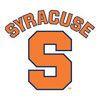
When it was established in 1873, the College of Visual and Performing Arts (VPA) at Syracuse University (SU) became the first degree-granting school of its kind in the U.S. The College of VPA went on to become one of the first in the country to grant a degree in music; one of the nation’s first colleges to require four years of study in both theory and music; and one of America’s first academic programs specifically designed for the study of rhetoric and communication.
Today, the College of Visual and Performing Arts at SU houses seven schools and departments, along with the recently launched 2022 VPA LA Semester. This program provides the opportunity for students to intern in Los Angeles while taking courses led by some of LA’s leading industry professionals. VPA departments and schools include the Department of Film and Media Arts; the School of Design; the Department of Communication and Rhetorical Studies; the School of Art; Setnor School of Music; the Department of Creative Arts Therapy; and the Department of Drama.
Programs for animators are housed in the Department of Film and Media Arts (DFMA). Options include the Computer Art and Animation BFA; a Computer Art MFA; and an Animation and Visual Effects (VFX) minor. All DFMA students may participate in global studies programs such as the Italian Film Studies and Filmmaking Summer in Bologna, Italy; the semester-long Film Studies Program in Prague, Czech Republic; or the 10-day Summer Immersion Program in Venice, Italy.
Other department benefits include the visiting artist series, including past guests such as past president of Pixar Animation Studios Jim Morris, actor/director Giancarlo Esposito, Pixar post-production director Cynthia Slavens; extensive computer art and animation facilities with access to Maya, Unreal Engine, ZBrush, Substance Painter, Houdini, Creative Cloud, Unity, and TVPaint; the local Women in Animation chapter; access to Orange Shorts animation production studio; and the Canary Lab, which hosts workshops, speakers, collaborations, visiting artists, research, exhibitions, and other events.
The Animation and VFX minor at Syracuse University is a 21 credit-hour program that allows students to focus in Animation, Visual Effects, or both. Course requirements include Introduction to 3D Animation; Intermediate 3D Animation; and Advanced Animation. Other course examples include Drawing for Illustration; Animation Workshop I-II; Introduction to Acting for Non-Majors; Drawing II: Representation to Conceptualization; Advanced 3D Animation and Visual Effects; Previz and Character Development for Animation; Film Scriptwriting; Narrative Drawing; and Visual Effects Workshop I-II.
Upon completion of the SU Animation and Visual Effects minor, students may pursue the Computer Art and Animation BFA or programs in other SU colleges. Students are also prepared to pursue entry-level positions in the entertainment industry, games, and advertising industries.
The Computer Art and Animation BFA at Syracuse University is a 121 credit-hour program consisting of major requirements, studio electives, culture studies, free electives, and academic electives. All students will complete the First Year Seminar (FYS), which explores areas such as ethics, health and wellness, socialization, and development of identity. Upon completion of the FYS, students will begin taking major and other courses.
Course examples for the program include Introduction to Programming for Visual Art; Intermediate 3D Animation; Drawing for Illustration; Advanced Animation; Conversations in Film and Media Arts I-II; Art and Craft of Animation; Film and Media Arts Advanced Studio; and Topics in Computer Gaming. Students will also complete History of Animation; Studio 1: Practices of Academic Writing; and Studio 2: Critical Research and Writing.
Examples of studio electives include Visual Effects Workshop I-II; Previz and Character Development for Animation; Special Topics in Digital Art; Animation Workshop I-II; and Topics in 3D Animation.
The Computer Art and Animation program at Syracuse University culminates with a senior project and portfolio completed across two courses. Graduates are prepared to pursue roles across the entertainment, games, and advertising industries, among others.
Program alumni have been hired at places such as Sony Pictures Imageworks, Lucasfilm, Industrial Light & Magic (ILM), Cartoon Network, Pixar, Blizzard Entertainment, Tippett Studio, MPC, and Filmworks/FX.
Founded in 1980 by computer artists Edward Zajec, the Computer Art MFA program at Syracuse University consists of 60 credit hours completed over three years. Focus areas include Computer Animation; VFX; Sonic Art; Gaming; Physical Computing; Software Art; Electronic Objects; and Multi-Channel Installation.
All students may participate in the residency program in LA known as the Turner Semester. All MFA students also have 24/7 access to computer art facilities; audio production, video post-production, and recording studios; dedicated Apple Mac Pro workstations; video camcorders and field audio recorders; and facilities outfitted with range of industry software and physical computing gear.
The Computer Art MFA program at Syracuse University culminates with an oral examination, final project, and presentation. Graduates are prepared to pursue advanced roles in all areas of entertainment, game design and development, advertising, education, and research.
Program alumni have been hired at major networks and studios such as Industrial Light & Magic (ILM), Cartoon Network, Pixar, Blizzard Entertainment, MPC, Sony Pictures Imageworks, Filmworks/FX, and Tippett Studio.
Founded in 1870, Syracuse University is an R1 research university that serves approximately 22,000 students from all 50 states and 120 countries. The school provides more than 500 majors, minors, and advanced degree programs across 13 colleges and schools. In addition to campuses in Syracuse, Manhattan, DC, and Los Angeles, Syracuse University operates overseas centers in Chile, London, France, Spain, Italy, and Poland. Syracuse University is accredited by the Middle States Commission on Higher Education (MSCHE).

The Department of Art, Film, and Visual Studies (AFVS) at Harvard University emphasizes an interdisciplinary approach to visual arts studies. This means students can concentrate in just about any area of visual arts. Examples include animation, filmmaking, video art, drawing, painting, and visual studies. Students in all concentrations have the opportunity to work with faculty in studios and focused seminars to reach their goals.
The AFVS Department is housed in the Carpenter Center for the Visual Arts—the nation’s only Le Corbusier building. In addition to the Carpenter Center, AFVS courses are held in Sever Hall—a National Historic Landmark, and Linden Street Studios—a designated space for faculty members, upper division students, and practicing artists).
For students who would like to pursue animation, the Department of Art, Film, and Visual Studies provides courses that allow students to customize their study plan. Examples include Fundamentals of Animation; Experimental Animation; Intermediate Animation; Film and Visual Studies Workshop; Embodied Practices: Coding and Interactivity for Artists; Advanced Projects in Time-Based Media; Contemporary Moving Image Practices; Adventure and Fantasy Simulation 1871-2036; Film Sound/Film Music; The Art of Film; Immersive Experience as Art; Film Study Center Non-fiction Filmmaking Workshop; A Video Toolbox; Drawing as a Visual Language; AI and Art; and Proseminar in Film and Visual Studies.
Leading to a BA with a concentration in Art, Film, and Visual Studies, the program culminates with a final project and presentation. Graduates of the AFVS programs at Harvard University are prepared to pursue careers in all areas of animation and film production. Program alumni have also gone on to teach or start their own independent studios.
Founded in 1636, Harvard University is the oldest institution of higher education in the U.S. Nearly 20,700 faculty and staff serve approximately 25,600 students enrolled in hundreds of programs across 13 degree-granting Schools and the Harvard Radcliffe Institute. Harvard University is accredited by the New England Commission of Higher Education (NECHE).

Rensselaer Polytechnic Institute (RPI) is one of the oldest technical universities in the U.S. In addition to being a leader in engineering and computer science programs, RPI focuses heavily on experiential learning through paid co-op experiences, summer research fellowships, and undergraduate research. This allows students enrolled in all RPI schools to gain real-world experience with major companies and organizations in New York and across the region.
The School of Humanities, Arts, and Social Sciences (HASS) at Rensselaer Polytechnic Institute is an interdisciplinary Houdini Certified School that houses the Departments of Communication and Media; Arts; Science and Technology Studies; Economics; Games and Simulation Arts and Sciences (GSAS); and Cognitive Science. Programs for animators are housed in the Department of Art and the Department of GSAS.
Department of Arts program options include the BS, PhD, and 16 credit-hour minor in Electronic Arts. Program options in the Department of GSAS include the BS in Games and Simulation Arts and Sciences.
RPI is a designated New York State Center of Excellence in Digital Game Development. The school’s GSAS BS has six concentration options including Electronic Arts; Computer Science; Music; Writing; Cognitive Science; and Management. With a curriculum that focuses on the animated and visual components of games, the Electronic Arts concentration is ideal for animators.
The program provides advanced coursework in 3D animation, visual effects (VFX), character modeling, rendering, and lighting. Course examples for the program include 2D Experimental Animation; 3D Animation; Graphic Storytelling; Game Animation; 3D Digital Modeling; Animation Production; 3D VFX; Interactive Visualization; 3D Technical Direction; Art in Context; and Advanced Digital Imaging.
The GSAS BS program at Rensselaer Polytechnic Institute culminates with a final project and presentation. Graduates are prepared to pursue careers in animation, interactive simulation and visualization, and game design and development. Program alumni can also pursue graduate study in areas such as game design artificial intelligence (AI), computer science, and fine arts.
The Electronic Arts (EART) program at RPI focuses on theory and practice. All students have opportunities to work one-on-one with faculty. BS students may select from five concentrations including Animation and Algorithmic Art; Sonic Arts; Integrated Visual Art; Video, Performance and Social Practice; and DIY (Do It Yourself). All students (BS, PhD, and minor) have access to resources such as the Experimental Media and Performing Arts Center (EMPAC), the Center for Deep Listening (CDL), the CRAIVE Lab, and the Emergent Reality Lab (ERL).
Across undergraduate programs students also have access to courses such as 2D Experimental Animation; Graphic Storytelling; 3D Animation; Interactive Arts Programming; Animation Production; Art and Coda and Interactivity; 3D Digital Modeling; Experimental Game Design; Advanced Digital 3D Projects; 3D VFX; Digital Imaging; Digital Filmmaking; Basic Drawing; and Introduction to Game Art.
The EART BS culminates with the Senior Thesis worth eight credit hours. Students will complete this final project across the Creative Seminar I and II courses. Upon completion, projects will be presented in a public exhibition designed and marketed by the students.
Graduates are prepared for to pursue careers as animators, game artists, storyboard artists, advertising animators, and educators, among others. Program alumni have been hired at companies and studios such as DreamWorks Animation, Microsoft, Hasbro, Amazon, Google, AMC Networks, IBM, Meta, The Creative Advantage, Branch VFX, 1st Playable, F2 System, Something Digital, and FDM Group.
The EART PhD program at Rensselaer Polytechnic Institute is one of the first programs of its kind. Consisting of 48 credit hours, this interdisciplinary program allows students to select courses from animation, performance, video, computer science, architecture, communication studies, and more. Required courses include Electronic Arts Overview; Research Methods; and the Arts Graduate Colloquium.
The EART PhD Dissertation (final project) for the program, culminates with a gallery show or performance. Graduates are prepared to pursue leadership roles in the entertainment industry, game design and development, advertising, research, and education. RPI alumni have been hired at places such as Raytheon, Apple, Google, Adobe, Microsoft, Dell, Oracle, and Boeing.
Established in 1824, Rensselaer Polytechnic Institute is the nation’s first technological research university. Serving approximately 6,970 students, RPI provides more than 145 undergraduate, graduate, and doctoral programs across five schools. Rensselaer Polytechnic Institute is accredited by the Middle States Commission on Higher Education (MCSHE) and the Accreditation Board for Engineering and Technology (ABET).

Dartmouth College provides several paths to study animation in the school's Film and Media Studies (F&MS) and the Computer Science departments. The Film and Media Studies Department houses an F&MS BA that allows students to customize their own emphasis. Examples include Animation, Screenwriting, and Film History. Students can enhance the degree further by selecting courses from a related discipline.
Animation and related course examples for the program include Introduction to Film: From Script to Screen; Animation: Principles and Practice; Storytelling in the Digital Age; Advanced Animation; SLOW Lab; Game Design Studio; Film History I-IV; Topics in Digital Culture and New Technologies; Cinema and the Graphic Novel; Video Games and the Meaning of Life; and Writing for the Screen.
The F&MS Department is housed in the Black Family Visual Arts Center, which is also home to the Animation Studio; the Studio Art Department; printmaking, architecture, painting, drawing, photography, and sculpture studios; a 200-seat auditorium; and spaces that host workshops, films, public talks, and other special events.
Other Dartmouth Film and Media Studies features include the Dartmouth Film and Media Alumni Festival; the Dartmouth Film Society; and Telluride at Dartmouth. Founded in 1949, the Dartmouth Film Society is the oldest college film society in the country.
The F&MS BA at Dartmouth College culminates with the Honors Project, completed across two courses. Final works can be an animated production, screenplay, live-action film, or thesis. Graduates of the program are prepared to pursue careers in areas such as entertainment, games, television production, and advertising. F&MS alumni can be found at places such as warner Bros., Electronic Arts (EA), Fox Searchlight, Apple, United Artists, Amazon Studios, HBO, Netflix, and Lone Wolf Media.
The Computer Science Department at Dartmouth houses a Computer Science MS (CS MS) with a Digital Arts (DA) concentration (CS MS/DA), and the DA minor. The MS program is designed for students with a degree (or completed minor) in areas such as computer animation, digital arts, studio art, design, modeling, architecture, or engineering.
Students in both programs have access to Dartmouth’s production labs and other facilities, as well as the Digital Applied Learning and Innovation (DALI) Lab. Students in the lab have opportunities to work with augmented and virtual reality (AR/VR), mobile applications, web design, and digital installations.
The CS MS/DA program is divided into three areas: Digital Arts, Technical, and Research/Thesis. Courses for the program are hands-on and project-based, with topics that explore areas such as computer modeling and animation, VR/AR, computer graphics, digital music, HCI, 3D printing, UI/UX design, computational photography, data visualization, and computational fabrication
Students in the DA minor may take courses such as Intro to 3D Animation; Foundations in Digital Design; 3D Modeling; AR/VR Design and Development; and Intro to UI/UX Design. The minor provides the option to complete the Projects in Digital Arts course or the independent study-based Advanced Projects in Digital Arts course. The Project in Digital Arts course culminates with a short animation, game, or VR/AR experience.
Across all Dartmouth degree programs, students may complete an internship, study abroad experience, and/or other department-specific experiential learning programs. Dartmouth students have opportunities to intern at places such as Illumination Entertainment, Activision Blizzard, and E! Entertainment.
Graduates of the Film and Media Studies and CS/DA programs at Dartmouth College are prepared to pursue careers in areas such as animation, film, television, advertising, UI/UX, game design, multimedia, computer graphics, VR/AR, and art education. Program alumni have been hired at places such as Pixar, Google, and Microsoft.
Dartmouth College was established in 1769, making it one of the oldest colleges in the U.S. The school established one of the first Native American programs in the country. Today, 200 Indigenous students from more than 70 different communities and tribal nations attend the College. Of Dartmouth's 84,000 alumni, more than 1,200 are Native Americans.
Dartmouth College serves approximately 6,745 students enrolled in more than 90 programs across 60+ departments. The school is accredited by the New England Commission of Higher Education (NECHE).

Virginia Commonwealth University (VCU) is home to one of the nation’s top public graduate art schools. Known as VCUarts (School of the Arts), this collaborative school also has a branch campus in Doha, Qatar. In 1998, VCUarts Qatar became the first American college built in Doha’s Education City. Serving approximately 300 students, the school focuses on the liberal arts and sciences, with shared courses through VCUarts Richmond, as well as conferences, arts research, event programming, and semester exchange programs.
VCUarts Qatar employs around 82 faculty that provide six programs leading to a bachelor’s or master’s degree. The campus accepts just 10 exceptional juniors and seniors from the Kinetic Imaging (KI); Painting and Printmaking; Graphic Design; and Art History programs. Students in other programs may apply to VCUarts Qatar, with approval.
The Department of Kinetic Imaging in the School of the Arts is a top choice for students who are interested in animation, video, and sound for films, experimental video, and art-making. Programs lead to a BFA or MFA in Kinetic Imaging. An 18 credit-hour Animation minor is also available. This program features required courses such as History of Animated Film; Animation Practices; and Animation Studio.
The remaining courses come from elective options. Examples include Sequential Imaging; Lighting and Cinematography; 3D Computer Art; Writing and Directing for Screen; and Digital 3D Studio.
The Kinetic Imaging BFA program at VCUarts requires 121 credit hours of study completed over four years. The Kinetic Imaging MFA requires 60 credit hours. Both programs are multidisciplinary and explore areas such as animation, emerging art, video, sound, and virtual reality (VR). Students may also customize a focus area or create their own cross-disciplinary path through electives and other courses.
BFA students will begin their studies with the Art Foundation Program consisting of 20 credit hours. Foundation course examples include Drawing Studio; Survey of Art I-II; Time Studio; and Space Research. Examples of major course requirements include Animation Practices; Creative Code and Electronics; Sound Art; Concept and Development Studio; 3D Computer Art; and Video Practices.
Elective and other course examples include 3D Computer Animation; Motion Graphics; Topics in Animation; Live Coding; Animation Concepts; Virtual Interactive Worlds; Global Film Studies; Writing for Stage and/or Screen; Topics in Video Art; Sound Design; and Socially Engaged Media.
In addition to a flexible curriculum, VCUarts KI BFA students benefit from workshops, lectures, and performances by visiting artists; internship opportunities; and access to state-of-the-art studios, labs, computing workshops, and a motion capture space. The program culminates with the Research and Production I-II courses, with a focus on critical analysis and development of the final project with emphasis on implementation, execution, and presentation.
Graduates of the Kinetic Imaging BFA program at Virginia Commonwealth University are prepared to pursue titles such as 2D Animator, 3D Animator, Motion Graphics Artist, Director, Game Artist, Sound Designer, and Adverting Animator.
The studio-based Kinetic Imaging MFA accepts just eight students per academic year. This collaborative and immersive program explores animated arts, interactivity, coding, emerging media, sound art, mediated performance, and installation. Each semester, KI MFA students will complete a graduate seminar and graduate studio class with a focus on vigorous studio production. Elective options also help students meet their individual studio and research goals.
Other KI MFA features include 24/7 access to personal studios along with animation, video, and sound production spaces; visiting artists talks, including one-on-one studio visits with graduate students; and opportunities to teach in the undergraduate VCUarts Kinetic Imaging program.
The culminating experience for the KI MFA is the exhibition of the student’s best work at VCU’s Anderson Gallery. The program may be completed in two years, full-time.
Graduates of the Kinetic Imaging MFA program at Virginia Commonwealth University are prepared to pursue leadership roles in the entertainment industry, game design and development, and advertising; the technology sector; and in architecture, science, medicine, education, and research, among others.
Founded in 1838, Virginia Commonwealth University is a top 100 research university that serves approximately 28,830 students. With more than 26,000 employees at VCU and VCU Health System, Virginia Commonwealth University is also Richmond, Virginia’s largest employer. The school provides more than 200 academic programs across 20 colleges, centers, and schools. Virginia Commonwealth University is accredited by the Southern Association of Colleges and Schools Commission on Colleges (SACSCOC).

New York Institute of Technology (NYIT or New York Tech) launched a Computer Graphics Laboratory (CGL or "The Lab") back in 1974. This pioneering facility had a hand in producing one of the world’s first computer animated films—Tubby the Tuba (1975). The production was directed by NYIT founder Alexander Schure, and Pixar co-founders Alvy Ray Smith and Ed Catmull.
Today, NYIT houses facilities such as The HIVE (Home for Innovation, Visualization, and Exploration); Dell Precision 3D graphics animation workstations; labs equipped with the latest industry-standard software and hardware; 3D motion capture studios; and Macintosh workstations.
In The HIVE, collaborative teams of NYIT students, faculty, and visionaries from partnering schools utilize motion capture, immersive environments, 3D printing, scanning, and other emerging technologies for creative research and professional development.
NYIT also houses six distinct colleges and schools, including the School of Architecture and Design. Within the school is the Department of Digital Art and Design, which has two paths to study animation. Options include the Digital Arts BFA, and the Digital Art and Design MFA. This terminal degree program has a Fine Arts and Technology concentration.
All School of Architecture and Design students benefit from internship opportunities at places such as Google, MTV, HBO, and NBCUniversal; participation in workshops and seminars; hands-on projects and other immersive learning activities; summer abroad experiences in places such as Italy, the UK, and France; and access to state-of-the-art production facilities and labs equipped with gaming technologies, motion capture, 2D, 3D and graphics software applications, printing capabilities, and emerging technologies.
Both BFA and MFA students also have opportunities to show their work at the Annual New York Institute of Technology Film and Animation Festival.
The NYIT Digital Arts BFA may be completed at the New York City or Long Island campuses. The program requires 120 credit hours of study that explores computer animation, digital arts production, and related areas. Course examples include Motion Graphics; Communication for Art and Design; Drawing I-II; Digital Compositing; Computer Graphics I-II; Form and Space; and Art History.
Digital Arts BFA students can enhance the degree through electives or the Game Design concentration. Elective examples include 2D Animation; Motion Capture; Game Design I-II; Concept and Visual Storytelling; Advanced 3D Modeling and Animation; Traditional to Digital Media; Illustration; and Special Topics. Students in the Game Design concentration will take courses such as Introduction to 3D Modeling and Animation; Emerging Technologies for Games and Interactive Applications; Level Game Design; Game Design I-II; and Game Design III: Technical Artist Studio. Most of these courses help students develop skills that can be utilized in animation production and many other creative fields.
The culminating experience for the Digital Arts BFA is the thesis completed across three courses (Thesis Proposal, and Thesis I-II), and the portfolio course. Graduates of the NYIT Digital Arts BFA are prepared to pursue titles such as Animator, 3D Modeler, Storyboard Artist, Video Game Designer, Motion Capture Artist, Multimedia Producer, Motion Graphics Designer, and Digital Artist.
The 60 credit hour Digital Art and Design MFA at New York Institute of Technology emphasizes classroom projects that utilize industry-standard 3D modeling software to create environments and characters. Students will also use motion capture to bring characters to life, and virtual and augmented reality (VR/AR) to create interactive art.
Course examples for this NYC-based program include Contemporary Art; Aesthetics and Theory; Drawing; Critical Thinking and Writing About the Arts; History of Art and Technology; and Business of Creative Industries. MFA students also have the opportunity to develop a focus area through the required 21 credit hours of electives. Elective examples include Visual Effects (VFX); Computer Programming; Stop-Motion Studio; Experimental Media; and UX/UI Design.
The Digital Art and Design MFA at New York Institute of Technology culminates with the Thesis Paper and Exhibition completed over four courses totaling 12 credit hours. Among these courses is Professional Critiques. In this course, students will attend lectures of visiting animators, designers, and other artists. Students will arrange individual meetings with these visiting professionals for critiques of their ongoing thesis projects. Results of the critiques are discussed at length with the student's thesis advisor.
Graduates of the Digital Art and Design MFA at New York Institute of Technology are prepared to pursue leadership roles in animation and film, television production, games, advertising, architecture, research, education, and more. NYIT alumni have been hired at places such as Amazon, Google, Boeing, Microsoft, and IBM.
New York Institute of Technology was founded in 1955 by PhD, creative, and entrepreneur Alexander Schure. Serving approximately 8,000 students from 40 states and 72 countries, the school provides more than 90 degree programs across campuses in NYC and Long Island; Jonesboro, Arkansas; and Vancouver, Canada. New York Institute of Technology is accredited by the Commission on Higher Education of the Middle States Association of Colleges and Schools.
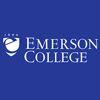
Emerson College (Emerson) has a unique study abroad experience that all students can participate in. The school's overseas campus in the Netherlands consists of a restored 14th-century moated medieval castle known as Kasteel Well. Located in the small village of Well, the campus welcomes around 90 Emerson students for summer programs, and for three months each fall and spring term.
Emerson College is also home to the School the Arts, which houses the Department of Visual and Media Arts (VMA). Within the department are two paths to study animation including the Media Arts Production BA (MAP BA) and the MAP BFA. Across programs, students have access to state-of-the-art equipment and facilities such as the Emerson College Emerging Media Lab (EML), where they can complete projects in areas such as 2D and 3D animation, character design, artistic anatomy, game design, rigging, and VR/AR.
Other VMA MAP benefits include hands-on work experience through Emerson College’s own in-house production company (Emerson Productions) or the Equipment Distribution Center (EDC); and opportunities to produce and screen work through film festivals and student organizations such as It’s All True – International Documentary Film Festival, Frames Per Second, Emerson Film Festival, and Women in Motion.
All Emerson MAP students have additional opportunities to gain experience at Emerson Los Angeles (ELA). Established in 1986 and situated on Sunset Boulevard, ELA is a state-of-the-art, 120,000 square feet LEED-certified building where students live, work, and learn for an entire semester. Up to 215 students arrive at ELA each fall, with the potential to secure internships at places such as Sony, Lionsgate, Netflix, Disney, or Hulu. The program provides access to more than 200 internship opportunities.
The MAP BA program at Emerson College has two tracks: Production and Media Studies. The Production track is the most popular option for animators. The program highlights courses such as Computer Animation; Writing the Feature Film; Game Design; Drawing for Character Design; Studio TV Production; Interactive Media; Writing the Short Subject; and Film Production. BA students have many opportunities to enhance the degree through the required 16 credit hours of Visual and Media Arts electives.
The MAP BA program at Emerson College culminates with the BA Capstone Project. This one-semester advanced production workshop allows students to produce portfolio work in any VMA area. BA Capstone students also have specialized access to facilities and unlimited production support for their projects.
MAP BFA students will complete all of the course requirements for the BA program, along with an additional 16 credits of advanced media production courses and electives. The program culminates with the BFA Thesis Project completed across two consecutive semesters.
Graduates of the VMA Department at Emerson College have been involved with major productions such as Everything Everywhere All At Once, Ant-Man, Fargo, Swiss Army Man, and Fantastic Four. Program alumni have also been hired at major studios such as Bunim Murray Productions, Digital Domain, MGM Studios, Searchlight Pictures, and Worldwide Pants.
Emerson College was established in 1880. The school serves approximately 4,930 students enrolled in more than 40 degree programs across the School of the Arts, the School of Communication, and Marlboro Institute. Campuses include Boston (main), Emerson Los Angeles (ELA), and Emerson Netherlands. Emerson College is accredited by the New England Commission of Higher Education (NECHE).

Maine College of Art and Design (MECA&D) houses an Animation and Game Art (AG) program that takes four years to complete, full-time. Leading to a BFA, this flexible, interdisciplinary program allows students to develop professional skills in other areas such as illustration, painting, and graphic design. Other program highlights include individual private studios; the MECA&D Artists at Work Program; 24/7 access to state-of-the art production facilities and equipment; and the opportunity to show works at campus exhibitions during all four years of the program.
Students will begin the AG BFA program with two years of foundation and animation preparation coursework. Foundation course examples include Digital Imaging; Two-Dimensional Design; 3D: Materiality; Art History Survey I; 4D: Space and Temporality; and Introduction to Drawing. Examples of animation preparation work includes Animation I; Art History Survey II; Animation and Game Art Concepts; Critical Approaches to Contemporary Art; and Sophomore Production Lab.
During the third year of the AG BFA Program, students will spend most of their time in the Major Production Studio and Collaborative Productions courses. The final year consists of elective coursework and the Professional Studio and Capstone Production courses. Final projects will be presented at the BFA Thesis Show. Graduates are prepared to pursue careers in all areas of animation and games. Some MECA&D alumni have also launched their own studios or freelance businesses.
Graduates hold titles such as Indy Animation Filmmaker, 3D Game Art Generalist, Feature Film Character Animator, Stop Motion Animator, Art Director, Game Artist, Animation Instructor, Lead Environmental Artist, Interaction Developer, and Artist Assistant.
Maine College of Art and Design alumni have been hired for salaried positions or as interns at places such as Walt Disney Animation Studios, Hasbro, Lone Wolf Media, Calypso Communications, Chickadee Games, Digital Mill Production Studio, Massachusetts Digital Games Institute (MassDigi) at WP, P3 Studio, White Dog Arts: Film and Media Production, Big Room Studios, Shoestring Theater, and Fort House Studios.
Founded in 1882 as part of the Portland Society of Art, Maine College of Art and Design serves approximately 510 degree-seeking students and 1,500 continuing students. Degree programs lead to a BFA, MFA, or MAT. Maine College of Art and Design is accredited by the New England Commission of Higher Education (NECHE). The school is also a member of the Association of Independent Colleges of Art and Design (AICAD).

University of Connecticut (UConn) is home to the School of Fine Arts. Established in 1961, the school houses four departments including Art and Art History; Music; Digital Media and Design (DMD); and Dramatic Arts. Programs in all departments are supported by specialized showcases, exhibition spaces, stages, and forums including the Digital Media Center; William Benton Museum of Art; von der Mehden Recital Hall; Contemporary Art Galleries; Jorgensen Center for the Performing Arts; and the Connecticut Repertory Theatre.
The DMD Department and the Department of Art and Art History provide several paths to study animation. DMD options include the BFA degree in Digital Media Design with concentrations in 3D Animation; Motion Design and Animation; Digital Film/Video Production; Game Design; and Web/Interactive Media Design. The Art and Art History Department has Art BA and Studio Art BFA programs. Students in both programs may concentrate in Illustration/Animation. All programs (including the DMD BFA) are accredited by the National Association of Schools of Art and Design (NASAD).
Across options, students will engage in collaborative, project based-learning with access to state-of-the-art studios, labs, and production facilities. Examples include a high-powered Cintiq computer lab for high-end 3D work, a 688 foot Motion Capture Studio; and a render farm. Students also benefit from independent study and internship opportunities in the junior and senior years of the programs.
For animators, the most popular DMD BFA concentrations are 3D Animation, and Motion Design and Animation. Across options, students will take courses such as History of Animation; 3D Animation I-II; Cinematic Storytelling; Advanced Compositing for Visual Effects; Film and Video Editing; 3D Modeling, Lighting and Rendering; 3D Simulations; Advanced 3D Research and Production; and Animation Science.
For the senior capstone, students in both concentrations will complete a year-long original BFA Senior Project under the direction of DMD faculty. Senior projects are showcased in the end-of-year DMD BFA Senior Thesis Exhibition, held in the Jorgensen Center for the Performing Arts.
Upon completion of the DMD BFA program some students elect to pursue the UConn DMD MFA. This three-year pathway allows students to develop their own independent creative practice. Students may also concentrate in 3D Animation or Motion Design and Animation. Both areas are delivered at the advanced level.
In addition to advanced concentration courses, MFA students will complete the following 5000-level courses: Digital Media Graduate Colloquium; Digital Culture; History and Theory of Digital Art; and MFA Studio Critique (taken a total of four times). Students will also complete the Digital Media Internship/Co-op or Independent Study. The program culminates with the MFA Final Project and Thesis Exhibition courses in the student’s area of concentration.
The Art BA and Studio Art BFA programs at University of Connecticut require 120 credit hours of study. The BA includes 42 art and design credit hours and the Studio Art BFA includes 66 studio art credits. Students in the Illustration/Animation concentration will explore and create projects in both digital and analog environments. Examples include 2D animation; cartoons; stop-motion animation; character design; graphic novels; product design; comics; and environment design.
Illustration/Animation course examples include Animation Fundamentals; Life Drawing I-II; Topics in Illustration; Graphic Design: Process and Thinking; Art History; Introduction to Digital Media; Studio Concepts; and Going Pro.
The culminating experience for the programs is a project that focuses on the student's area of concentration. Final works will be exhibited in the Annual Senior Show.
Graduates of the DMD and Art and Art History programs at University of Connecticut are prepared to pursue roles in areas such as animation, games, filmmaking, publishing, advertising, virtual and augmented reality (VR/AR), architecture, television production, user interface and user experience design (UI/UX), medical illustration, live performance, social media, sports, and animation or illustration for science, medicine technology, legal, aerospace, education, and research. MFA graduates are prepared to pursue advanced leadership roles in these areas.
DMD and Art and Art History alumni have been hired at companies and studios such as Pixar, Adobe, Disney, HBO, Epic Games, Food Network, ESPN, Lego, Google Creative, NBC Universal, Adobe, Viacom, CBS 2 News, NBC Sports Group, World Wide Wrestling Entertainment (WWE,) DW Advertising, Stoopid Buddy Studios, Fusion 360, AW Design, XVIVO Medical Animation Studio, YouTube Gaming, Blur Studio, Matter Communications, and Greenhouse Studios.
University of Connecticut is the state’s flagship university. Founded in 1881, the school opened with just three faculty members and 13 male students. Today, UConn is home to more than 18,000 faculty and staff that serve approximately 32,100 students across seven campuses, and 14 colleges and schools. Available programs include 245+ majors and minors, and more than 180 programs leading to a master’s, PhD, or graduate certificate. University of Connecticut is accredited by the New England Association of Schools and Colleges (NEASC).

Rutgers University Camden (Rutgers-Camden) is an R2 research institution with a 91% employment rate (or graduate school) within six months of graduation. The school also houses the Faculty of Arts and Sciences (FAS), which comprises three schools, 16 departments, more than 30 undergraduate majors, and over 15 graduate programs. This makes the FAS the largest academic unit at Rutgers-Camden.
Within the FAS is the Department of Visual, Media, and Performing Arts, which provides two paths to study animation including the Art BA and the Visual Art BFA. Both programs allow students to concentrate in Animation. Art BA students can also add the Animation or Digital Arts minor. Both minor options require 18 credit hours of study. Course examples across programs include Drawing; Computer Animation; Storyboard and Character Design; and Classical Animation.
Students in all programs benefit from internships; the Visiting Artists Program; seminars; access to separate studios for drawing and painting; a photography lab and digital photography studio; symposiums and presentations; the ZoomOnArt Lecture Series; the Student Works Gallery; and Stedman Gallery programming.
Students also benefit from the Electronic Arts Studios at Rutgers-Camden, which provides access to two renovated graphic design studios, two animation labs, and a post-production lab outfitted with networked computers, post-production units, 2D/3D and editing software, and more.
The Art BA and Visual Art BFA programs require 120 total credits. The Art BA requires 48 credits in the major and 72 in general education. The BFA requires 81 credits in the major and 39 in general education. The Animation concentration is 21 credit hours for the BA and 33 credit hours for the BFA. Examples of courses across programs include Computer Animation I-II; Character Rigging; Animation Storyboard; AI-Generated Animation; 3D Design in VR; and Character Animation.
BA students will also take Classical Animation, with access to electives such as Video Game Design (in collaboration with the Digital Studies Center); 3D Modeling and Printing; and Independent Study. BFA students will take other courses such as 2D Character Design; 3D Interaction Design in Virtual Reality; and Digital Effects. For the concentration, both BA and BFA students are required to complete the Animation Production course and the Animation Capstone I-II courses.
Graduates of the Art BA and Visual Art BFA programs at Rutgers University Camden are prepared to pursue graduate studies or positions in industries such as entertainment, game design, and advertising. Rutgers-Camden BA and BFA alumni have been hired at studios such as Walt Disney, Warner Bros., Digital Domain, Ubisoft, Psyop, and BBC Studios.
Rutgers University Camden is part of Rutgers, The State University of New Jersey (Rutgers). Founded in 1766, Rutgers University is the eighth oldest university in the U.S. and New Jersey’s land-grant university. Serving approximately 67,620 students, the school employs 27,450 faculty and staff across campuses and locations in all 21 New Jersey counties.
Rutgers-Camden was founded as South Jersey Law School and the College of South Jersey, which joined Rutgers in 1926. Serving approximately 5,965 students today, Rutgers University Camden provides nearly 70 degree programs across four colleges and schools. The school is accredited by the Middle States Commission on Higher Education (MSCHE).

Tufts University (Tufts) is home to the School of the Museum of Fine Arts at Tufts University (SMFA at Tufts or SMFA). The school provides intensive studio arts training to an estimated 450 students. Programs take place in an interdisciplinary learning environment, with opportunities to gain hands-on experience through on-campus projects and internships. Students also benefit from visiting artist lectures; networking events; participation in student exhibitions; research projects; workshops; and career development programming.
SMFA at Tufts also provides two paths to study animation including the BFA and Combined BFA + BA/BS. All options allow students to customize a focus in one or more mediums in collaboration with academic advisors. Focus area examples include Animation, Film and Video, Virtual Reality, Digital Media, and Graphic Arts.
Students also have 24/7 access to the Animation Studios at SMFA, which provides a private animation suite; a large screening and production studio with adjacent labs focused on multimedia animation and shooting with LED lighting and DSLR cameras; and digital drawing capabilities with Wacom Cintiq's. The facility supports students experimental, digital, and traditional animation projects.
The BFA and Combined BFA + BA/BS programs explore 2D, 3D, hand-made, and digital techniques while creating everything from animated films to animation for advertising or the web. Sample courses across programs include Animation Basics; Animation Integration; Drawing for Animation; Stop Motion Animation; Moving Image; and Animation 2. Students can add the Studio Art minor to enhance the degree.
In the final year of the SMFA BFA program, students may apply to the SMFA Tufts Senior Thesis Program. During this yearlong capstone, student will develop professional works and an exhibition. BA and BS students will complete a final project to graduate. Combined BFA + BA/BS students will graduate with two degrees—a BFA, and a BA or BS in their chosen area.
Across all programs, graduates are prepared to pursue careers in film and animation, television production, game art and design, advertising, web design, and illustration, as well as emerging fields for animators such as medical animation, forensic animation, architectural visualization, motion graphics for social media, augmented and virtual reality (AR/VR), and educational animation.
The School of the Museum of Fine Arts at Tufts University has an additional option for animators seeking a master's degree: the Studio MFA. This terminal degree program provides the opportunity to work with faculty and staff to develop a personalized studio curriculum. Students can focus their studies in areas such as animation, film and video, graphic arts, AR/VR, installation, sound, or digital media.
The curriculum for this 60 credit hour program emphasizes seminars, visiting artists, exchange and travel opportunities, and the Graduate Colloquium. A forum for graduate students, faculty, and professional artists, Colloquia are all-day events that take place at the Museum of Fine Arts, Boston. Colloquia are open to the public.
The Studio MFA program at SMFA at Tufts culminates in a thesis and self-curated exhibition of the student's best work. Graduates are prepared to pursue leadership roles in film and animation, game art and design, advertising, television production, illustration, web design, AR/VR, medical animation, architectural visualization, forensic animation, research, motion graphics for social media, and education.
Founded in 1852, Tufts University is a private research institution that spans four campuses. The school serves approximately 13,430 students enrolled in more than 285 degree, minor, and certificate programs across ten colleges and schools. This includes the School of the Museum of Fine Arts.
SMFA began as a partnership with Tufts University in 1945, with the goal to provide a joint degree program focused on teacher training. The collaboration established its first BFA program in 1956. Today, SMFA at Tufts serves more than 400 students enrolled in BFA, MFA, MAT, Combined-degree (BFA + BA/BS), certificate, and studio diploma programs.
The School of the Museum of Fine Arts at Tufts University is accredited by the National Association of Schools of Art and Design (NASAD). As part of Tufts University, SMFA is also accredited by the New England Association of Schools and Colleges (NEASC).
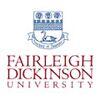
In 1965 Fairleigh Dickinson University (FDU) opened Wroxton College in England, making it the first American University to own a campus overseas. Today, students at FDU's England campus live and study in the 17th-century Jacobean mansion known as Wroxton Abbey. Students in all programs at Farleigh Dickinson have the opportunity to study for a full semester or an abbreviated summer session. This includes students enrolled in FDU's School of Art, which houses the Animation Program.
Available pathways within the Animation Program include the Film and Animation BA; the Animation MA and MFA; the combined Film and Animation BA/Animation MA; and the combined Film and Animation BA/Animation MFA. The FDU Animation Program also provides 2D Animation, 3D Animation, and 3D Video Game Animation minors.
Across programs, students may participate in FDU’s internship program, which provides the opportunity to gain valuable experience working with major studios and networks such as DreamWorks, MTV, NBCUniversal, Viacom, Nickelodeon, and ABC. Other program benefits include small class sizes; immersive hands-on projects; workshops; and access the newly renovated Animation Lab.
The Film and Animation BA has three concentration options including 2D Animation, 3D Animation, and Video Game Animation. Students in the MA, MFA, and combined degree programs may focus in 3D Character Animation, Video Games, or Visual Effects. Course and elective examples across programs include Character Animation Using CAT; Motion Graphics with After Effects; Vector Animation with Animate CC; Tradigital Animation; 3D Particle Animation and Effects; ZBrush Digital Sculpting; Logo and Product Animation; Creative Imagery with Photoshop; Storytelling; 2D Animation with Toon Boom; 3D Computer Animation; Motion Tracking; Compositing in After Effects; and Storyboarding.
The Animation programs at Fairleigh Dickinson University culminate with a thesis completed across two or three courses, depending on the degree. Graduates are prepared to pursue careers across the entertainment and game design industries. Program alumni are often hired by the companies they have interned with as well as others such as Tristar Pictures, Warner Bros. Games, ABC, Marvel Comics, Sony Pictures Imageworks, CBS Skyline Entertainment, Verizon, IBM, Psyop, Whisper Films, Tribe Pictures, High Five Games, and Pixel Light Digital Media.
Established in 1942, Fairleigh Dickinson University was the first comprehensive university in the world to require distance learning of its undergraduates. Serving more than 12,000 students, FDU is also the largest private university in New Jersey. Fairleigh Dickinson University provides more than 100 degrees and disciplines across two New Jersey campuses (Madison and Teaneck), the England campus, and a campus in Vancouver, British Columbia, Canada.
FDU also has extension sites across the state of New Jersey, along with partner institutions and study abroad opportunities around the world. Fairleigh Dickinson University is accredited by the Middle States Commission on Higher Education (MSCHE).